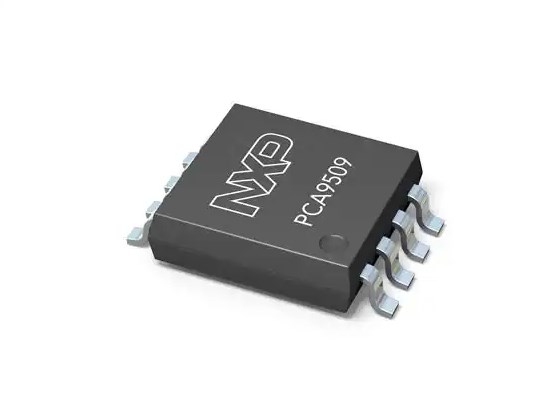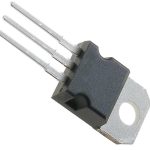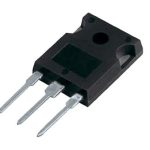The PCA9617ADP, with its advanced features and tailored design, proves to be an invaluable asset for enhancing communication reliability in industrial environments. In this article, we will delve into the advantages of using the PCA9617ADP in industrial settings, exploring how it addresses the unique challenges faced and elevates communication to new levels of efficiency and dependability.
Introduction
PCA9617ADP
The PCA9617ADP is a highly versatile IC that serves as a differential I2C bus buffer, designed to address the unique challenges faced in industrial applications. It boasts a range of features and specifications that make it an ideal choice for enhancing communication reliability.
Functionality and Purpose in industrial settings
The IC incorporates differential signaling, a technique that significantly improves signal integrity by reducing the impact of noise and interference. By transmitting data differentially, the PCA9617ADP mitigates common-mode noise, ensuring accurate and reliable data transmission. This feature is particularly valuable in industrial environments where electromagnetic interference and noise are prevalent.
Benefits of using PCA9617ADP in industrial applications
Additionally, the PCA9617ADP employs low voltage swing to minimize signal reflections and attenuations, enabling better signal integrity over long distances. This capability allows for communication across extended distances without compromising data accuracy or transmission speed.
The IC also integrates filtering mechanisms that suppress high-frequency noise, further enhancing the quality of transmitted data. By reducing noise interference, the PCA9617ADP ensures that critical information is transmitted reliably, even in challenging industrial environments.
Reliable Communication in Industrial Applications
Importance of reliable communication
Reliable communication is vital for the smooth operation of industrial applications. In these environments, accurate and timely data exchange is essential for process control, monitoring, and decision-making. However, industrial settings pose unique challenges to communication systems.
Challenges and requirements for communication systems
Industrial environments often span large areas, requiring communication over long distances. Moreover, these environments are rife with electromagnetic interference, electrical noise, temperature variations, and voltage fluctuations. These factors can degrade communication quality, leading to data corruption, system errors, and operational inefficiencies.
How PCA9617ADP addresses these challenges
To address these challenges, the PCA9617ADP offers several key benefits. Its differential signaling and low voltage swing features ensure robust communication, even in the presence of noise and interference. By transmitting data differentially, the IC minimizes the impact of common-mode noise, providing reliable communication over extended distances.
The integrated filtering capabilities of the PCA9617ADP suppress unwanted signals, ensuring that only clean and accurate data is transmitted. This feature is particularly valuable in industrial environments where electrical noise can compromise communication reliability.
Furthermore, the robust industrial design of the PCA9617ADP makes it suitable for harsh industrial environments. It can withstand temperature variations, voltage fluctuations, and electromagnetic interference, ensuring consistent performance and minimizing the risk of system failures.
By incorporating the PCA9617ADP into industrial applications, developers can achieve reliable and efficient communication, leading to increased productivity, improved process control, and enhanced overall system performance.

Benefits of PCA9617ADP in Industrial Applications
Improved Signal Integrity
The PCA9617ADP plays a vital role in enhancing signal integrity in long-distance communication within industrial applications. When transmitting signals over extended distances, challenges such as noise and interference can degrade the quality of the signal. The PCA9617ADP addresses these issues through its advanced features:
- Differential Signaling: The PCA9617ADP utilizes differential signaling, which significantly improves noise immunity and reduces the impact of common-mode noise. By transmitting data as a voltage difference between two lines, it becomes less susceptible to external disturbances, ensuring reliable signal transmission.
- Low Voltage Swing: The IC employs a low voltage swing technique, reducing the impact of signal reflections and attenuations. This feature enables better signal integrity by minimizing distortions caused by impedance mismatches and transmission line effects.
- Integrated Filtering: The PCA9617ADP integrates filtering capabilities that suppress high-frequency noise and attenuate unwanted signals. This ensures that the transmitted data remains clean and free from interference, resulting in improved signal integrity.
Extended Reach
The PCA9617ADP excels in supporting long-distance communication links, extending the reach of industrial applications. Reliable communication over extended distances is crucial for various industrial systems, and the PCA9617ADP offers features that enable this:
- Differential Bus Buffer: The IC acts as a buffer between the I2C master and slaves, allowing the I2C bus to operate over longer distances without signal degradation. It boosts the signal strength, compensating for losses and ensuring reliable communication even in challenging environments.
- I2C Bus Extension: The PCA9617ADP supports I2C bus extension by allowing multiple buffers to be cascaded. This enables communication across greater distances by extending the reach of the I2C bus while maintaining signal integrity.
- Low Power Consumption: The PCA9617ADP operates with low power consumption, making it suitable for applications that require energy-efficient solutions. This feature is particularly beneficial when deploying long-distance communication systems that need to minimize power consumption while maintaining reliable communication.
Robust Industrial Design
The ruggedness and reliability of the PCA9617ADP make it an ideal choice for industrial applications operating in harsh environments. Industrial systems often face challenging conditions, including temperature variations, voltage fluctuations, and electromagnetic interference. The PCA9617ADP addresses these challenges with its robust industrial design:
- Wide Temperature Range: The IC is designed to operate reliably across a wide temperature range, allowing it to withstand extreme temperatures commonly found in industrial environments. This feature ensures consistent performance and minimizes the risk of system failures due to temperature fluctuations.
- Voltage Fluctuation Tolerance: The PCA9617ADP is designed to tolerate voltage fluctuations, providing stable and reliable communication even when the power supply experiences variations. This capability ensures uninterrupted operation and minimizes the risk of data loss or system instability.
- Electromagnetic Interference (EMI) Resistance: The IC incorporates EMI protection mechanisms that mitigate the impact of electromagnetic interference. This feature safeguards communication signals from external noise sources, ensuring reliable data transmission in the presence of electromagnetic disturbances.
Industrial Applications of PCA9617ADP
Application 1: Factory Automation
In factory automation systems, the PCA9617ADP enables reliable communication between sensors, actuators, and control systems. Its ability to mitigate noise and interference ensures accurate data transmission, allowing for precise control and monitoring of industrial processes. The differential bus buffer and I2C bus extension features enable communication over long distances, making it suitable for large-scale factory setups.
Application 2: Industrial Robotics
Industrial robots require fast and precise communication to perform complex tasks. The PCA9617ADP enhances signal integrity, enabling seamless communication between robot controllers and various subsystems. Its robust industrial design ensures reliable operation in harsh robot environments, such as manufacturing lines or hazardous environments.
Applications 3: Process Control Systems
In process control systems, the PCA9617ADP plays a crucial role in maintaining reliable communication between sensors, actuators, and control units. Its ability to extend communication reach allows for the integration of distributed control systems, enabling efficient monitoring and control of industrial processes. The IC’s resistance to temperature variations and voltage fluctuations ensures stable communication in demanding process control environments.
Applications 4: Energy Management Systems
Energy management systems rely on accurate data acquisition and control. The PCA9617ADP facilitates communication between energy meters, sensors, and central control units. Its low power consumption and robust design make it suitable for energy-efficient applications. Additionally, the IC’s resistance to electromagnetic interference ensures reliable data transmission in power distribution environments.

Integration and Design Considerations
Factors To Consider
When integrating the PCA9617ADP into an industrial system, several factors should be considered to ensure optimal usage and configuration:
- System Layout and Wiring: Proper layout and wiring are crucial for achieving reliable communication. Follow industry best practices for signal routing and minimize the length of transmission lines to reduce the risk of signal degradation. Consider shielding techniques to mitigate electromagnetic interference.
- Power Supply Stability: Ensure a stable power supply for the PCA9617ADP and associated devices. Voltage fluctuations can affect communication quality. Consider using voltage regulators or filters to maintain a consistent power supply.
- I2C Bus Configuration: Configure the I2C bus speed and pull-up resistors according to the system requirements. Consult the PCA9617ADP datasheet for recommended values and guidelines. Optimize the bus configuration to balance speed and noise immunity.
- Environmental Considerations: Consider the operating temperature range and environmental conditions of the industrial application. The PCA9617ADP’s wide temperature range and EMI resistance make it suitable for demanding environments. Ensure proper thermal management and protection against moisture or dust ingress.
Potential Challenges and Limitations
While the PCA9617ADP offers numerous benefits, it’s essential to be aware of potential challenges or limitations:
1. System Compatibility
Ensure that the PCA9617ADP is compatible with the existing system’s voltage levels, I2C bus specifications, and communication protocols. Verify compatibility and conduct thorough testing before integration.
2. System Complexity
Integrating the PCA9617ADP adds complexity to the system design. Adequate knowledge of I2C bus operation and signal integrity considerations is necessary for successful integration. Consult the datasheet and application notes for detailed guidance.
3. Cost Considerations
Evaluate the cost implications of integrating the PCA9617ADP into the industrial system. While the IC provides significant benefits, it’s important to consider the overall system budget and cost-effectiveness.
Conclusion
In the fast-paced world of industrial applications, reliable communication is the key to success. By mitigating noise and interference, extending communication reach, and providing a robust industrial design, the PCA9617ADP ensures seamless data exchange, even in the most challenging conditions. With the PCA9617ADP at the core of their communication systems, industrial operators can achieve increased productivity, improved process control, and enhanced overall system performance.



